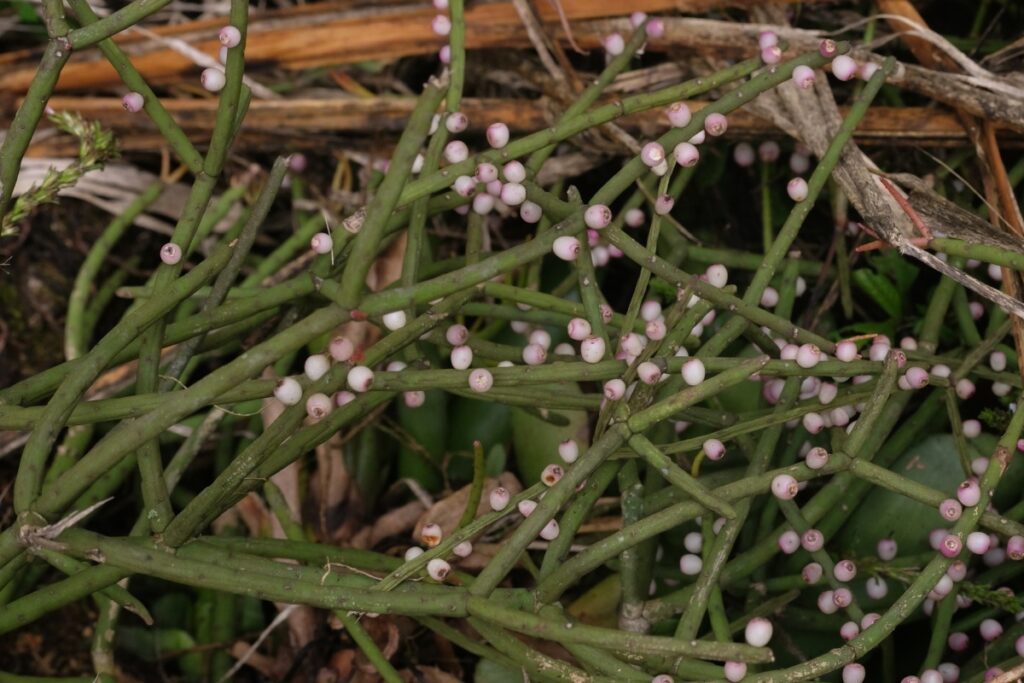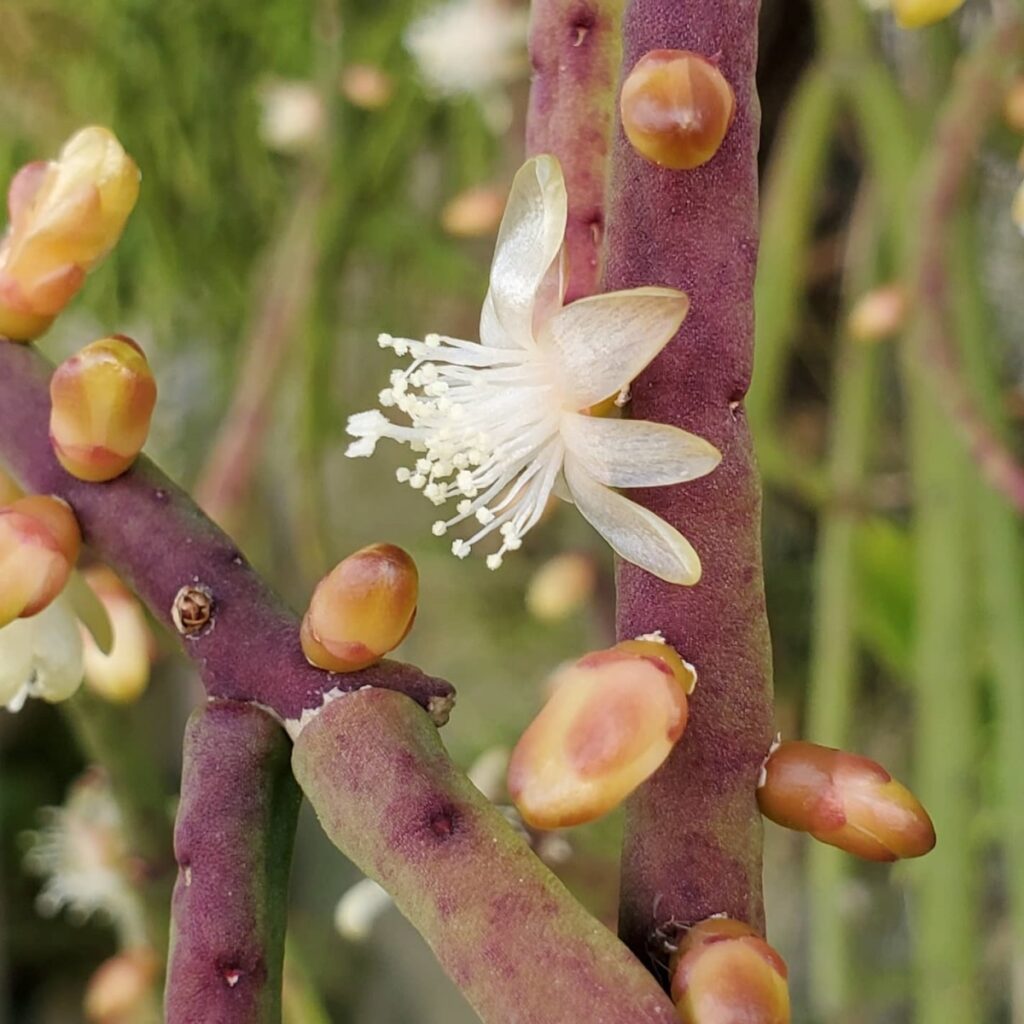Rhipsalis grandiflora: The Pinky White Floral Gem of the Cactus Family
Imagine a cactus that defies all expectations – one that trails gracefully instead of standing tall and prickly. Introducing the Rhipsalis grandiflora, a true gem in the cactus family that will captivate you with its delicate beauty and ease of care. Get ready to be enchanted!

Contents
About Rhipsalis grandiflora
This species boasts stiff, initially upright then arching and trailing 3-angled stems, adorned with tufts of whitish hair at the areoles (where spines typically emerge on cacti). But the true showstopper? The stalkless, pinky-white flowers that bloom in a glorious display, measuring around 3/4 of an inch across – remarkably large for this genus!
Related Post:
16 Types of Rhipsalis With Names and Pictures
How To Care For Rhipsalis grandiflora
Location and Light
The Rhipsalis grandiflora prefers a bright yet filtered environment, shielded from direct, intense sunlight. A spot near a window that receives gentle morning and evening rays is perfect. If you’re growing it indoors, a grow light can mimic the ideal conditions. Outdoors, find a partially shaded area during the summer months, ensuring it’s protected from harsh winds and heavy rain.
Soil and Potting
For optimal growth, this cactus thrives in a well-draining, specialized soil mix. While store-bought cactus soil works, you can create your own by mixing ingredients like perlite, coarse sand, and peat moss. When it comes to potting and repotting, spring is the ideal time, but you can do so anytime before autumn. Gently remove the plant from its current vessel, clean it, and transfer it to a fresh soil mix in a slightly larger pot, allowing room for growth.

Watering
Rhipsalis grandiflora enjoys a delicate balance when it comes to water. During the spring and summer growing seasons, water regularly, allowing the soil to dry out slightly between waterings. In autumn, reduce watering, and during the winter months, provide only moderate moisture – just enough to prevent complete drying out. Ensure you use lime-free water, like rainwater, as these cacti are sensitive to mineral buildup.
Fertilizing
To encourage lush growth and abundant blooms, fertilize your Rhipsalis grandiflora every two weeks, using a balanced, water-soluble fertilizer, until the first buds open. Pause fertilizing during the winter months when growth slows.
Temperature and Humidity
Unlike many cacti, Rhipsalis grandiflora doesn’t require a dormant period. However, it prefers a warm, moderately humid environment year-round. Maintain temperatures between 68°F and 77°F (20°C to 25°C) and boost humidity levels by placing water-filled containers near radiators or using a humidifier.
Pests and Problems
While diseases are rare when caring for Rhipsalis grandiflora properly, mealybugs can be a nuisance, especially during the winter months when humidity levels drop. Keep an eye out for white, cottony masses and act quickly by isolating the affected plant and treating it with an appropriate insecticide or systemic insect control product.
Pruning
Pruning is generally unnecessary for Rhipsalis grandiflora, but you can trim it back if it becomes too large or unruly. Use clean, disinfected pruning shears and make cuts where the wound will be less visible or at the end of a stem joint. Pruned pieces can be used for propagation.
Rhipsalis grandiflora Propagation

Propagating Rhipsalis grandiflora is a breeze, and cuttings are the way to go. Here’s a step-by-step guide:
- Take 3-6 inch long cuttings in spring or summer, ensuring they’re healthy.
- Allow the cut ends to dry for a few days before planting.
- Plant the cuttings about 1.5 inches deep in the recommended soil mix.
- Keep the potting mix slightly moist and place the container in a bright, warm location (68°F to 77°F or 20°C to 25°C).
- Cover the container with a clear plastic bag to maintain high humidity, but ventilate daily to prevent mold.
- After 3-4 weeks, roots should have formed, and you can care for the new plants as usual.
Alternatively, you can propagate Rhipsalis grandiflora from seeds, but the process is more involved. If you have ripe fruits, extract the seeds, remove the pulp, and sow them in a well-draining seed-starting mix. Maintain consistent moisture and warmth, and with patience, you’ll soon have new cacti to cherish.
FAQ’s
Is Rhipsalis grandiflora toxic to cats and dogs?
While often confused with the toxic spurge plant, Rhipsalis grandiflora is generally considered non-toxic or only mildly toxic to cats and dogs. However, it’s still best to keep it out of reach of curious pets, just to be safe.
